01:08
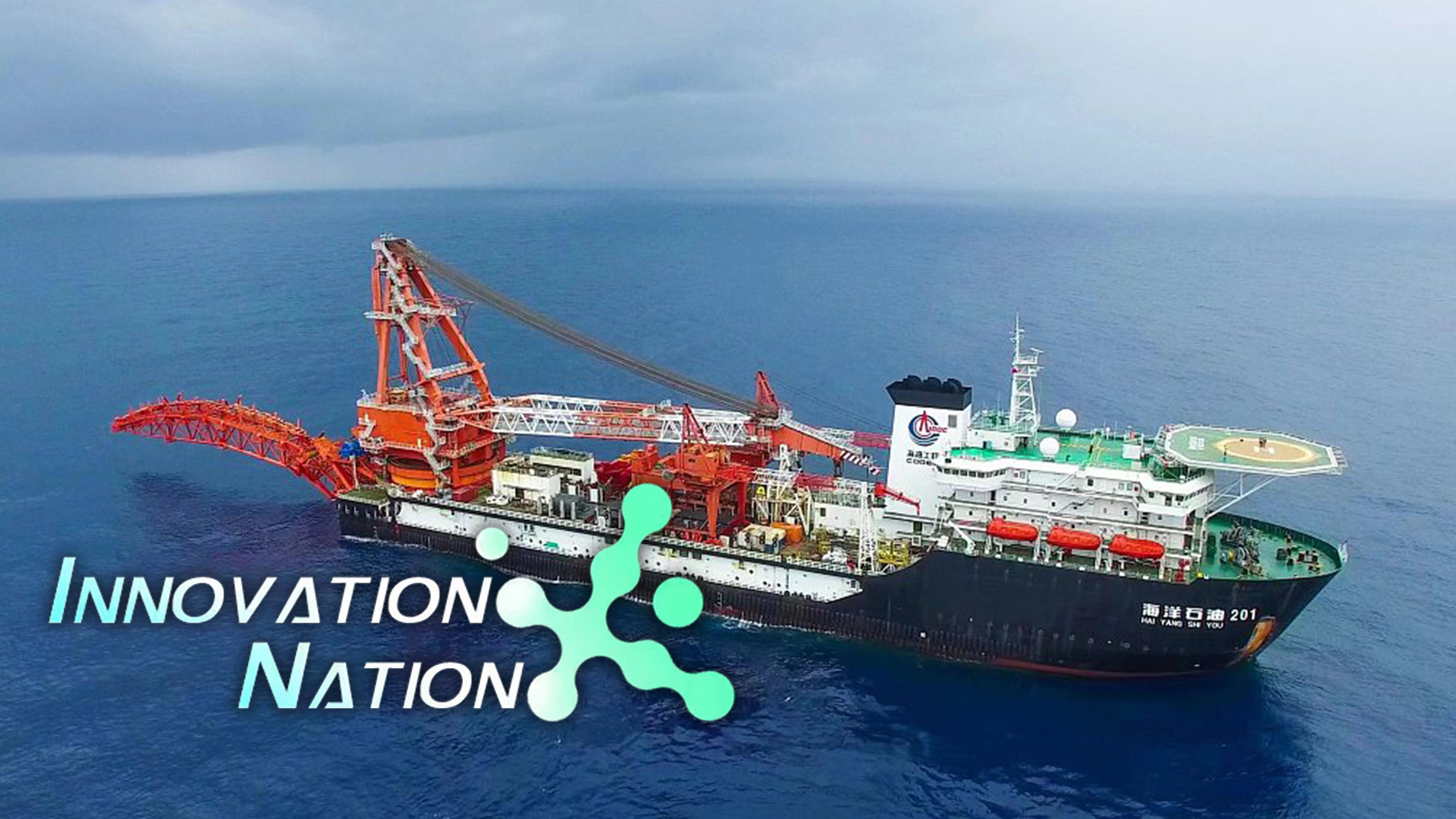
China on Thursday completed laying its longest deepwater pipeline for transporting oil and gas, signifying breakthroughs in the country's construction capacity for deepwater long-distance submarine pipelines and deepwater equipment technology.
Laying the pipeline is a crucial component of the phase II project of China's first independently developed ultra-deepwater energy station, Shenhai-1, or Deep Sea-1, which became operational in June 2021.
The phase II project commenced construction in November of last year and is located approximately 130 kilometers from Sanya City in south China's Hainan Province between the Yacheng 13-1 gas field and the Shenhai-1 energy station.
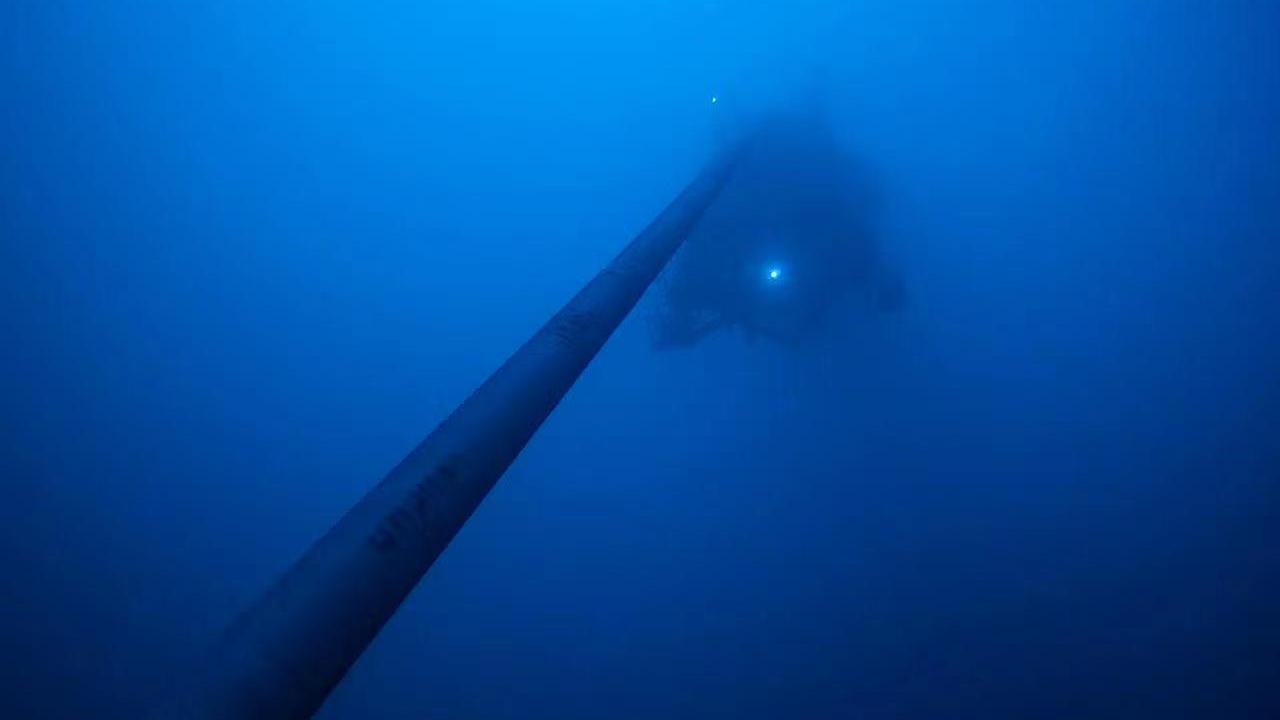
Pipes are laid as deep as up to 1,000 meters under the sea. /China National Offshore Oil Corporation (CNOOC)
Pipes are laid as deep as up to 1,000 meters under the sea. /China National Offshore Oil Corporation (CNOOC)
The maximum operating depth in the area is nearly 1,000 meters. Once operational, the phase II project is expected to increase the peak annual output of the Shenhai-1 gas field from 3 billion cubic meters to 4.5 billion cubic meters.
To efficiently and economically develop the phase II project, the China National Offshore Oil Corporation (CNOOC) has pioneered a new development model.
This model includes a subsea production system, a shallow water jacket processing platform and a remote-control system for a deepwater semi-submersible platform, according to Wu Hualin, deputy manager of the deepwater pipe and cable department of the Shenhai-1 Phase II project at the Hainan branch of CNOOC.
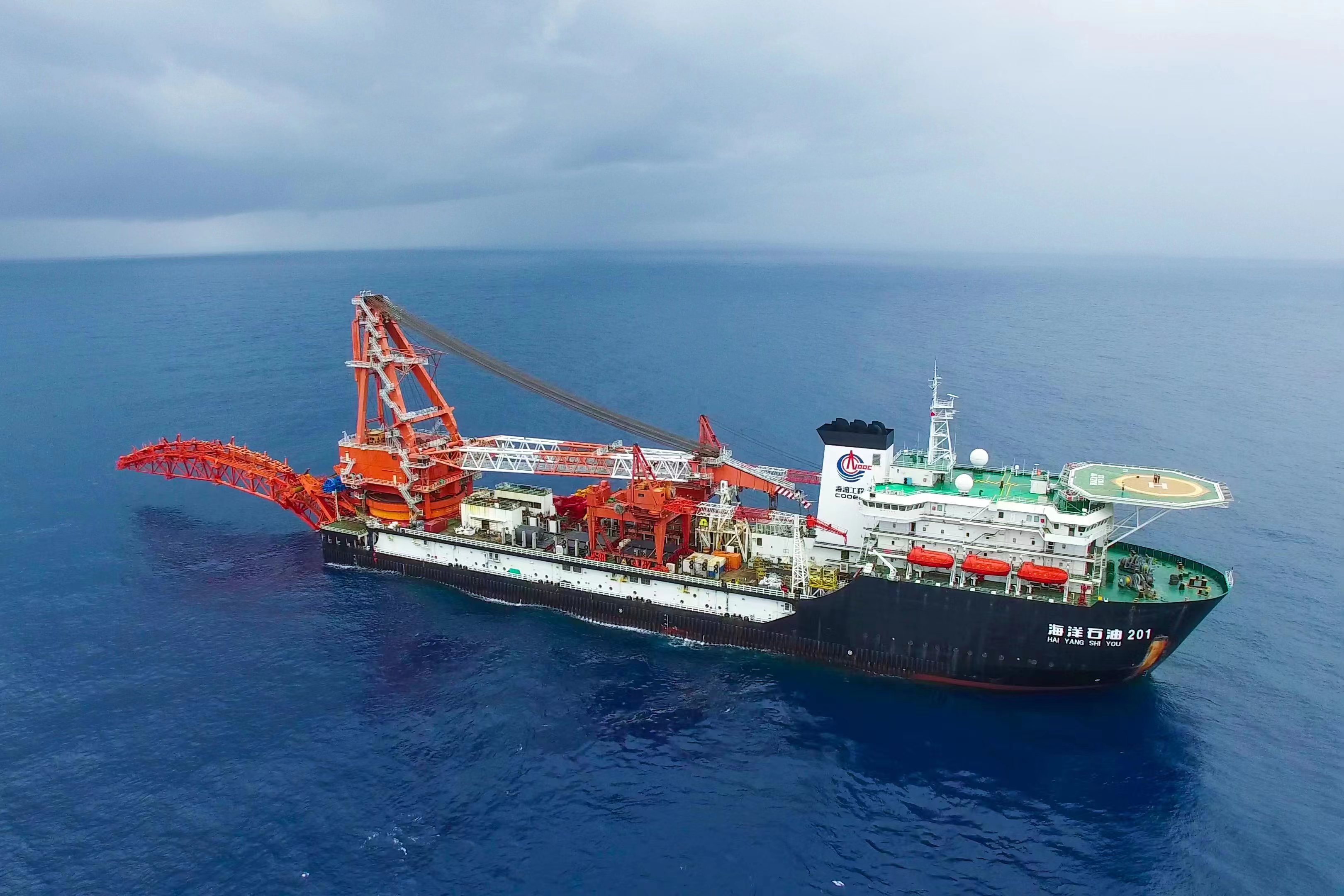
China's first deepwater pipe-laying crane vessel, named Haiyang Shiyou 201. The vessel can lay pipes at depths of 3,000 meters and lift 4,000 metric tonnes. /CNOOC
China's first deepwater pipe-laying crane vessel, named Haiyang Shiyou 201. The vessel can lay pipes at depths of 3,000 meters and lift 4,000 metric tonnes. /CNOOC
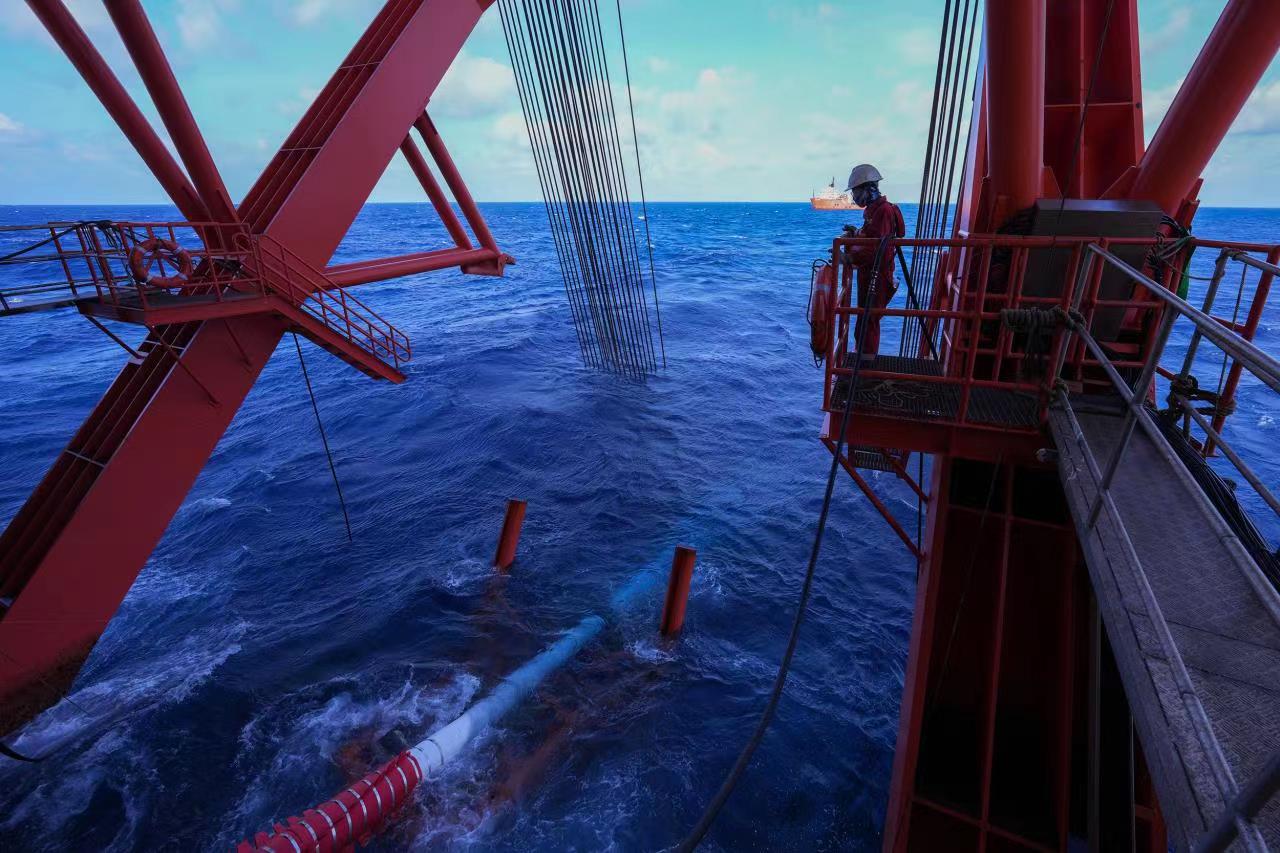
Construction workers inspect pipes entering the sea. /CNOOC
Construction workers inspect pipes entering the sea. /CNOOC
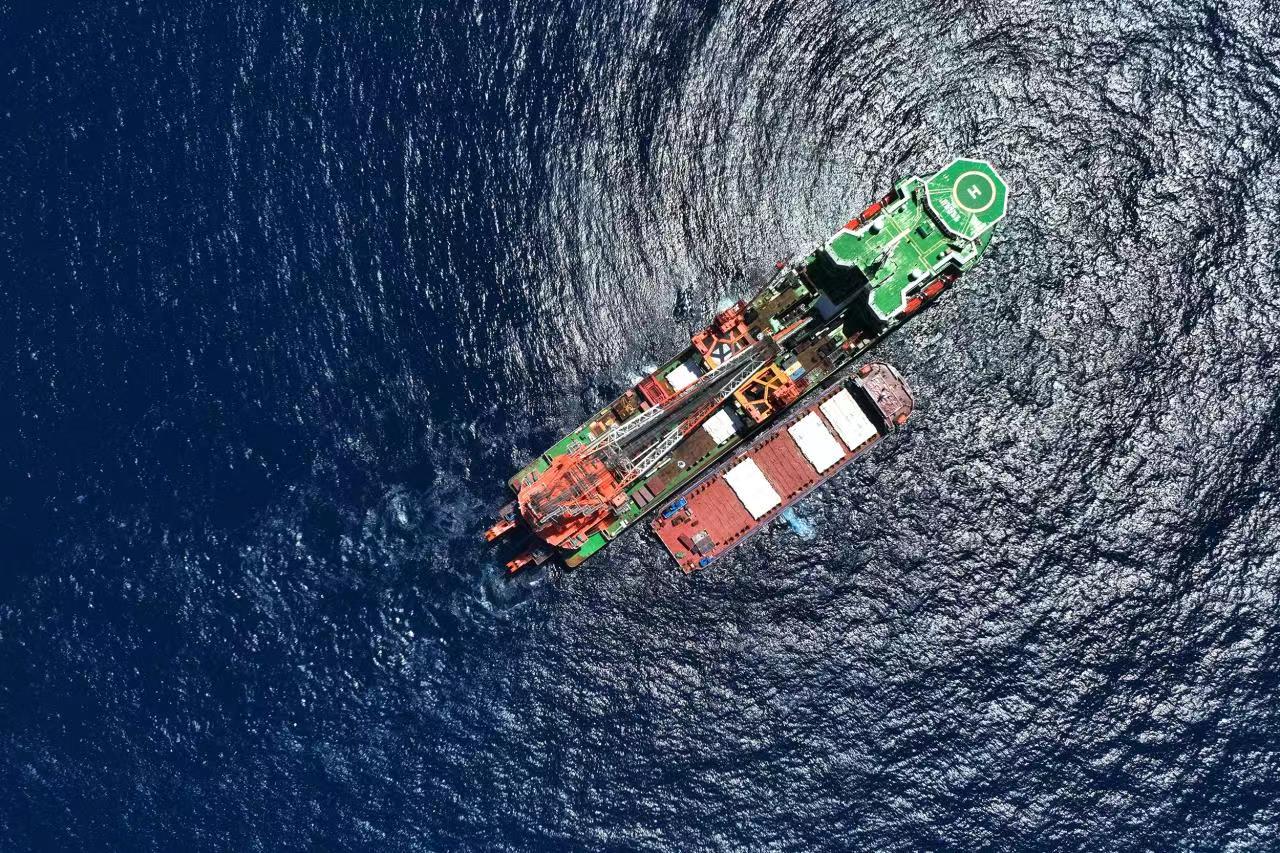
An aerial shot of Haiyang Shiyou 201 laying pipes. /CNOOC
An aerial shot of Haiyang Shiyou 201 laying pipes. /CNOOC
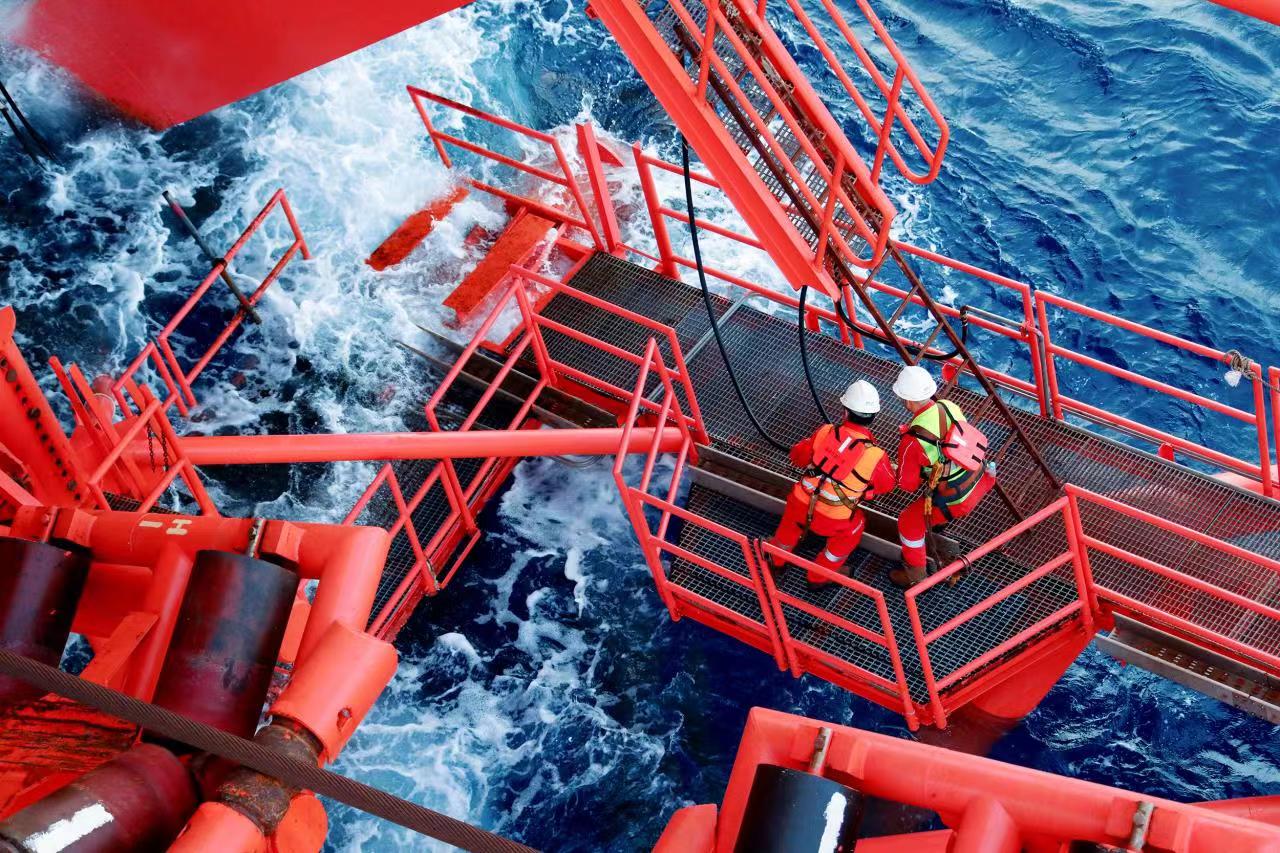
Construction personnel overhaul the ship stinger of Haiyang Shiyou 201 during the pipeline-laying gap. /CNOOC
Construction personnel overhaul the ship stinger of Haiyang Shiyou 201 during the pipeline-laying gap. /CNOOC
Submarine pipelines serve as a "lifeline" in ensuring the smooth transportation of offshore oil and gas. The phase II project represents China's first deepwater, high-pressure gas field.
The oil and gas extracted from such a field have complex components and are subjected to high temperatures and pressures. Conventional sea pipes are unable to meet the production requirements.
As a result, CNOOC has adopted a combined approach of 114 km of deepwater large-diameter seamless steel pipe and 1.5 km of deepwater bimetallic composite pipe in the deepwater environment to establish the "aorta" connecting the Phase II project for oil and gas transmission.
So far, China has laid over 9,000 km of offshore oil and gas pipelines, which is equivalent to the distance from Shanghai to Paris.